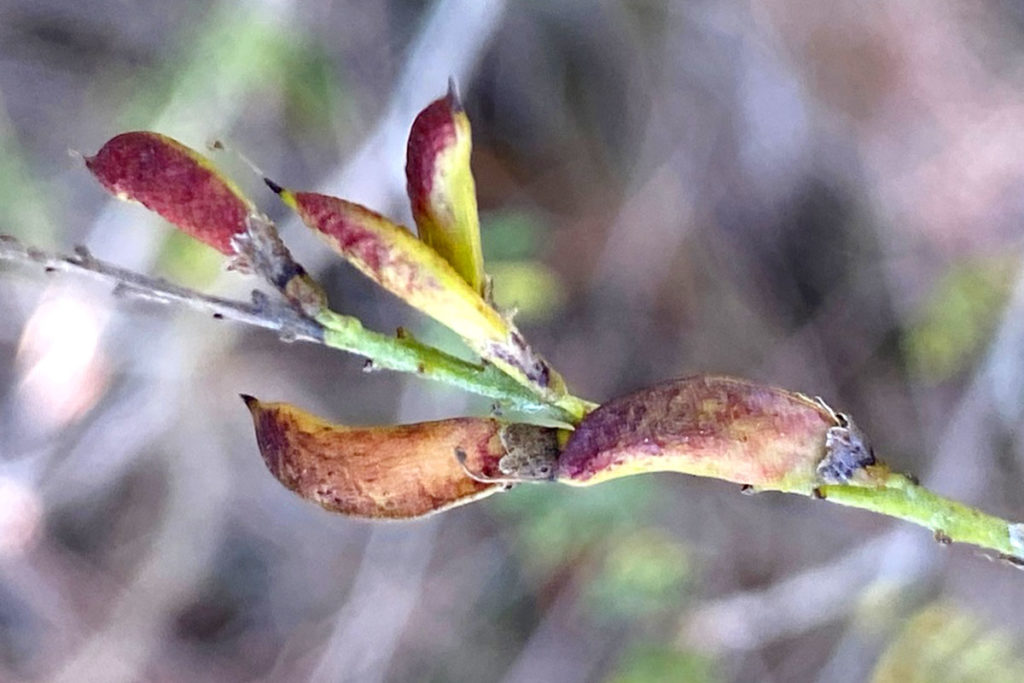
Texas Kidneywood
Photo by: Jennifer (iNaturalist Observation 16859486)
Alamo Area Master Naturalist (AAMN) Ron Tullius was the author of this piece. It has been updated and is being maintained by AAMN Stacy Fontenot.
Texas Kidneywood (Eysenhardtia texana) is a perennial, non-spiny, Texas native; a member of the Pea family (Fabacea). Its multiple trunks show an open, airy habit. The finely divided (13-47 leaflets), deciduous, compound leaves have the pungent smell of citrus that deer, livestock, and other wildlife eat. It prefers to grow in the sun, but it will tolerate partial shade. Kidneywood can get as tall as 20 feet, and is heat, cold, and drought tolerant making it an excellent landscape plant for this area. Small, fragrant, white blossoms on elongated flower stalks appear in May, then intermittently through the summer and fall following rains.

Photo by: Larry (iNaturalist Observation 46235612

Photo by: Clark & Frances Hancock (iNaturalist Observation 37310761)
WHAT CREATURES WOULD BE ATTRACTED TO ITS BLOSSOMS?

Photo by: Wilt Shaw (iNaturalist Observation 32814001)
Kidneywood, also known as Bee Brush (not to be confused with Aloysia gratissima aka Bee-Brush with similar white inflorescences), is a magnet for butterflies and bees seeking nectar. It’s a host plant for the Southern Dogface butterfly, whose larvae (caterpillars) eat the leaves of Kidneywood. The fruits, maturing in September, are small brown pods attached to the ends of stems.
WHY NAME A PLANT FOR AN ORGAN OF THE BODY?
It’s not unusual for a plant’s common name to reflect its everyday use as a food, tool, or medicine. Wood from a species closely related to Kidneywood historically was used to treat kidney and bladder ailments.
WOULD YOU BE SURPRISED TO KNOW THAT THE HEARTWOOD IS USED FOR DYE?
The heartwood of Kidneywood is reddish-brown and when soaked in water, produces a golden-yellow or orange color used for dye. A blue fluorescence becomes visible when the dye is placed against a black background making it quite unique and especially striking.
OTHER PLANTS IN THE LANDSCAPE WITH KIDNEYWOOD

Photo by: Gary Rogers

Photo by: Gary Rogers

Photo by: Gary Rogers
Eve’s Necklace (Sophora affinis), like Kidneywood, is a member of the Pea family, produces springtime, drooping clusters of pinkish-white flowers, followed in the late summer and fall by bean pods that resemble strings of shiny, black beads. These “necklaces” will often hang on the gently drooping branches of the tree through the winter. The dense, hard wood of Eve’s Necklace will produce a yellow dye.
Also look for the spiny stems and cottony leaf undersides of Gum Bumelia (Sideroxylon lanuginosum). Its small, black fruits feed a number of bird species. People used to chew the sap issuing from the bark of the tree, an early form of chewing gum.
Wafer Ash, also known as Hop Tree, (Ptelea trifoliatea) is a beautiful understory tree found along with Texas Kidneywood. This very distinctive tree has trifoliate leaves emitting an unpleasant, musky odor when crushed. The drooping, round, flat seeds, similar in appearance to the wafers used in communion, appear in early September. Wafer Ash is a host for two-tailed Swallowtail, Eastern Tiger Swallowtail, & Giant Swallowtail.
Other native species to keep an eye out for are, besides the frequent junipers, persimmons, oaks, and elms, include Honey Mesquite, Bluewood Condalia, Net-leaf Hackberry, and Catclaw Acacia. Be observant of the variety of leaf shapes, colors, and textures; feel the smooth, rough, and warty barks; and look for the presence or absence of spines.
For more information for children see, We Love Leaves, Tree Houses and Texas Kidneywood.


